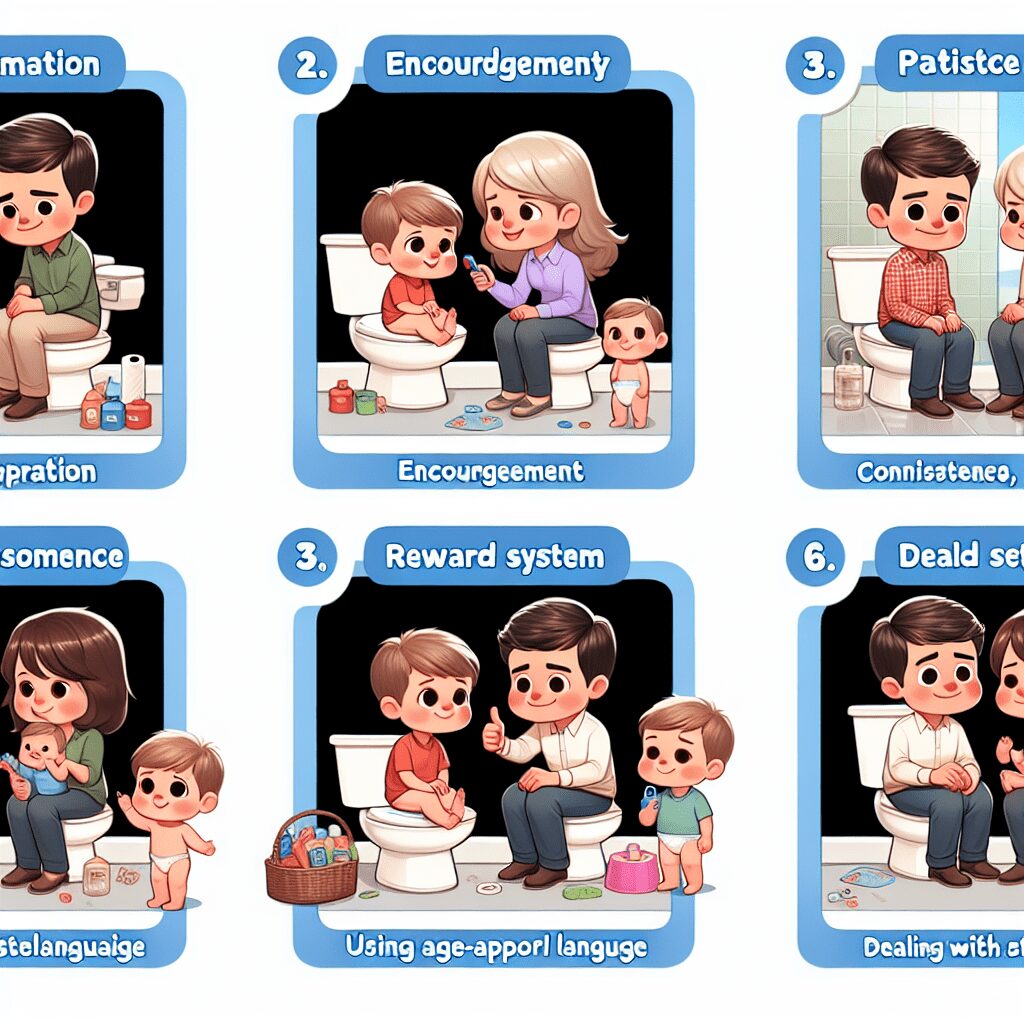Flush Away the Confusion: Top 7 Potty Training Tips Every Parent Should Know
Potty training can feel like a daunting task. The endless preparation, mixed emotions, and advice from well-meaning friends and family can leave any parent feeling overwhelmed. But fear not! With the right strategies in place, you can turn this challenging phase into a rewarding experience for both you and your little one. In this blog post, we will explore the top 7 potty training tips that every parent should know. So, take a deep breath, and let’s dive into the world of potty training together!
1. Know When to Start
One of the most common misconceptions is that potty training should commence as soon as your child starts walking. However, it’s essential to recognize that not all children are ready at the same age. The best time to initiate potty training typically falls between 18 months to 3 years, but it all boils down to your child’s physical and emotional readiness.
Signs that your child is ready may include:
- Showing interest in the bathroom habits of others.
- Staying dry for longer periods, indicating bladder control.
- Communicating the need to go or displaying discomfort in dirty diapers.
Take the time to observe your little one. When they exhibit these signs, it is often a good cue to start the potty training journey.
2. Create a Positive Environment
Approach potty training with a positive attitude, as this will help to create an encouraging environment. Make bathroom visits enjoyable by setting up a positive routine with your child, and consider introducing fun elements such as:
- Fun potty songs or stories that you can read together in the bathroom.
- Fun rewards, like stickers or a small treat when they successfully use the potty.
By creating a positive association with using the toilet, you can maximize your child’s willingness to participate in the process.
3. Invest in the Right Gear
Having the right tools is essential for effective potty training. Depending on what resonates best with your child, consider the following options:
- Potty Seats: If your child finds the standard adult toilet intimidating, a potty seat that fits over the regular toilet can help ease their fears while making it more comfortable for them.
- Child-Size Potties: A small, independent potty can provide a great solution for younger kids. This option can also empower them by allowing them to take the lead.
Be sure to let your child choose their preferred potty gear, as this will give them a sense of ownership and encourage participation.
4. Establish a Routine
Consistency is key! Establishing a potty routine gives your child the structure they need to understand when they should try to go. Here are some tips for creating a routine:
- Schedule regular potty breaks: Consider prompting them to sit on the potty first thing in the morning, after meals, or before bedtime.
- Use a visual reminder, such as a chart or a timer, to signal potty time.
By repeating this routine, your child will start to recognize when it’s time to use the potty and develop healthy habits along the way.
5. Embrace Accidents as Part of the Process
Remember that accidents will inevitably happen. It’s essential not to react with frustration or embarrassment, as this could create anxiety around potty training. Instead, practice patience and positive reinforcement. Acknowledge the accident, and gently remind your child to use the potty next time.
Perhaps consider the following:
- Keep cleaning supplies readily available and encourage your child to be involved in cleaning up messes, fostering accountability.
- Celebrate successes, no matter how small, to keep their spirits high.
By embracing accidents, you empower your child to view mistakes as a natural part of learning, rather than a source of shame.
6. Encourage Independence
As your child starts to get the hang of using the potty, encourage them to take on more responsibility. This step can play a huge role in building their confidence. Here’s how you can empower their independence:
- Allow your child to choose their underwear and clothing. This can make them feel a sense of pride and ownership over the process.
- Teach them the steps associated with using the toilet independently, such as pulling down and up their pants, wiping, and flushing.
By taking these small steps, you foster their independent skills and make them more willing to master potty training.
7. Be Supportive, Yet Flexible
Every child is unique, so it’s essential to adapt your approach as you go along. Some children may take to potty training quickly, while others may need more time.
- Stay attuned to your child’s needs and emotions throughout this process. If they seem stressed or resistant, it may be wise to take a break and try again later.
- Keep communication open. Encourage them to express their feelings, fears, and excitement about this new milestone.
As parents, the journey is just as important as the destination. By being supportive and flexible, you allow your child to feel confident in their abilities, which ultimately makes the process smoother.
Conclusion
Potty training is a significant milestone in your child’s development, filled with both challenges and triumphs. By approaching this journey with knowledge, patience, and a positive mindset, you can transform these moments into valuable learning experiences for both you and your child.
Remember, each child is unique, so don’t feel pressured to follow a specific timeline or method. The key is to create an environment that fosters their independence while providing the support they need. With these top 7 potty training tips, you are well-equipped to flush away the confusion and set your child on the right track to success.
FAQs
Q: When is the best time to start potty training?
A: The best time varies per child, generally falling between 18 months and 3 years. Look for signs of readiness rather than a specific age.
Q: How can I make potty training more fun?
A: Make it a game! Use praise, rewards (like stickers), fun songs, or even potty-related stories to make the experience enjoyable.
Q: What should I do if my child refuses to use the potty?
A: Take a step back. If they seem resistant, it’s okay to pause and try again after some time. Avoid pressure, as it can create anxiety around the process.
Q: How do I handle accidents?
A: Stay calm! Accidents are a normal part of potty training. Offer gentle guidance and remind them that it’s okay to try again.
Q: Should I let my child pick their own underwear?
A: Absolutely! This choice can foster a sense of pride and ownership over the potty training process.
Q: Is nighttime potty training different from daytime training?
A: Yes, nighttime potty training may take longer and often happens after daytime training is established. Use waterproof mattress protectors and encourage bathroom visits before bed.
Q: What if my child has a fear of the toilet?
A: Introduce them to the toilet gradually. Start with a child-sized potty or potty seat, and allow them to explore it at their own pace.
Instantly Access Your Free Children’s Books Here! (https://payhip.com/BlueCherryStore) – Disclaimer: I may earn a commission from qualifying purchases as an affiliate. Please note that I only recommend products I believe will provide value to my readers.(M)









